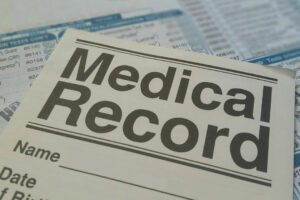By Patricia B. Mirasol, Multimedia Producer
THE application of robotics and artificial intelligence (AI) in clinical operations in the Philippines has already started, but according to healthcare stakeholders, the real game-changer is data integration.
Data integration is the process of combining data from different healthcare sources, including electronic medical records (EMRs) and medical devices.
“We can go on and on with AI applications here, but there is value in having an EMR,” said Einstein C. Rojas, a board member of the Philippine Alliance of Patient Organizations, and an innovation ecosystem consultant for an international company.
“One of the most basic problem-solution fits that data analytics can do is when you go to a hospital,” he said in an Aug. 6 Zoom interview. “The first thing they ask you to do is fill up a form — but this form [asks for] your basic information that you already gave to other hospitals.”
Mr. Rojas noted the usefulness of a nationwide data integration model, wherein “a patient holds his/her data, and then simply allows the [healthcare provider] to access it during checkup, treatments, or emergency cases.”
The worldwide health records market size was estimated at $32.23 billion in 2023 and is anticipated to grow at a compound annual growth rate of 4.43% from 2024 to 2030, according to Grand View Research.
Government initiatives to encourage healthcare IT usage is a key driver to this market, the market research and consulting company said.
In Asia-Pacific, Singapore and Australia have already enacted nationwide EMR systems that provide healthcare providers access to patients’ medical records.
Singapore’s National Electronic Health Record (NEHR) system, in particular, is an enabler for the island-state’s vision of “One Patient, One Health Record.”
Accenture, a global professional services company, worked with MOH Holdings, the holding company of Singapore’s public healthcare assets, to create the NEHR system using a common application architecture, common data standards, and privacy and security guidelines.
Clinicians have a holistic picture of each patient’s history, as the system provides a summary care record for each patient including problem lists, medications, discharge and event summaries, allergies, immunizations, investigations, and procedures.
Hospitals in the Philippines, including the University of the Philippines-Philippine General Hospital (UP-PGH), are likewise embarking on their own journeys in healthcare innovations. In the works is a more efficient EMR system.
Based on a 2019 study by the Philippine Health Research Registry, the average pre-consultation time of new patients in the UP-PGH’s outpatient department is over an hour, or 72.84±43.39 minutes. The average total service time, meanwhile, is 8.70±6.99 minutes.
“We have a very different patient experience here. We go visit a doctor and have a 5- to 10-minute checkup that you waited two hours for,” Mr. Rojas told BusinessWorld.
Mr. Rojas, whose wife is currently pregnant, says an average checkup with an obstetrician-gynecologist at a tertiary hospital entail “arriving at 8 a.m. for a 9 a.m. clinic, getting listed at around 15th most of the time, [then] waiting two hours at the minimum.”
“Imagine an EMR with an appointment setting, where you have a period to go to a consultation, so you don’t have to wait,” he said. “It saves time, it saves stress, it definitely saves costs from the hospital and doctor.”
There are various factors that eat up a doctor’s time, Dr. Gerardo D. Legaspi, the PGH medical director, said.
Nearly half (49%) of their resident doctors’ time is spent inputting health information, Mr. Legaspi said in a July 23 interview.
“We are partnering with AIM [the Asian Institute of Management] to develop a local speech-to-text program…, so that the actual interview can proceed without the resident typing, and then you retrieve it and actually have a summary afterwards,” he said. “That’s the kind of AI we want to use for patient care.
PERSONALIZED HEALTH PLANS THROUGH DATAEven primary care providers recognize technology’s role in the implementation of healthcare in the country.
Centralizing data is crucial when assessing patients, according to Karl Aaron G. Dimaano, general manager and chief operating officer of HealthFirst, multispecialty outpatient clinic and Unilab subsidiary.
Data has been consolidated in its four-storey Williams Building, he said during the facility’s June 7 launch. A patient who consults across different outpatient services will have a single record instead of multiple.
Utilizing technology in data collection has helped “facilitate the collection of real-time health data, enabling more accurate monitoring and management of patient conditions,” HealthFirst medical director Dr. Robert T. Castro said.
It has allowed organizations to gain insights into disease patterns and health trends, he said.
Chronic disease programs can likewise be tailored through health metrics profiling, Mr. Castro added in an Aug. 8 e-mail.
“By analyzing data such as blood pressure, glucose levels, BMI [body mass index, which is used to estimate one’s body fat], and lifestyle factors, we create personalized health plans that address the specific needs of each employee,” Mr. Castro said.
“This approach enhances overall workforce health, reduces absenteeism, and boosts productivity.”
CENTRALIZED DATABASEThe Medical City (TMC) has been investing in infrastructure in order to implement its technology-related solutions, according to group chief information officer Jojo C. Dionaldo.
He shared that the network’s initiatives include a superapp with features such as a doctor’s consult queueing system as well as access to each patient’s digital twin.
This is in line with TMC’s focus on preventative healthcare, Mr. Dionaldo said in a July 26 Zoom interview.
“With a digital twin,” he said, “we can map [your body] and tell you that, in five or ten years, if your habits and your [diagnostic] findings do not change, then you will have this kind of sickness.”
TMC, with six hospitals and 64 clinics in its network, is working to create a centralized database to “unify and harmonize all our EMRs” by the end of 2025, Mr. Dionaldo told BusinessWorld.
“The moment we make that successfully implemented across our hospitals and clinics, we will have been able to achieve an EMR which has never been implemented in the Philippines — and in Southeast Asia — in that scale,” he said.
“The government or the Department of Health [DoH] can use this as a benchmark or a reference,” he added.






